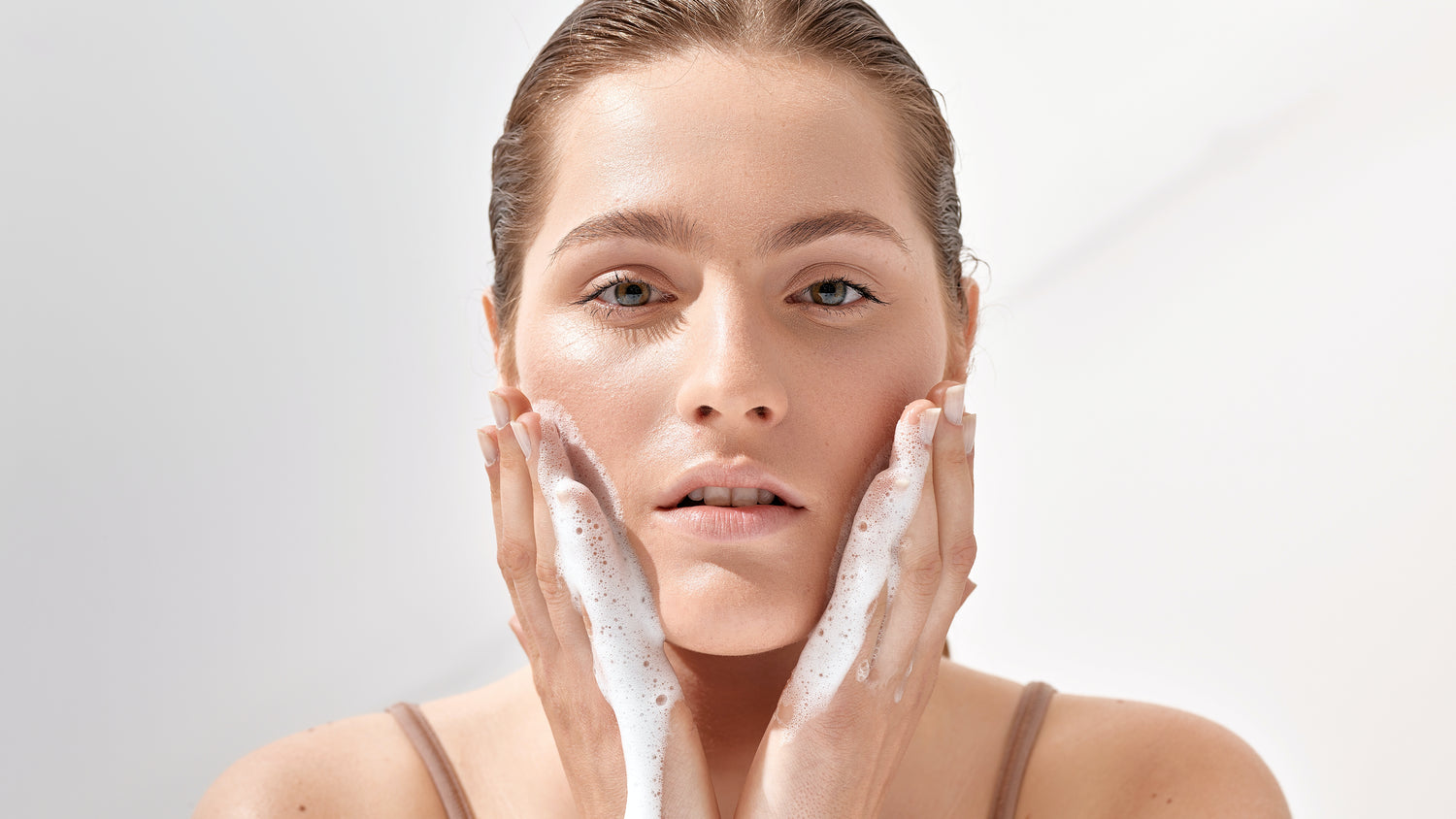Did you know that about 1 million microorganisms inhabit every cm 2 of skin? The skin is our largest organ whose primary role is a physical barrier, but it also serves as an interface with the environment and as such is colonized by a diverse milieu of microorganisms that make up the skin microbiome, most of which are harmless or even beneficial to us. However, the microbiome of our skin needs to be kept in balance, otherwise the occurrence of skin diseases is common. Find out which factors affect its variability, how changes lead to the development of dermatoses, but also how to keep your microbiome healthy.
What is the skin microbiome?
An abundant and diverse collection of bacteria, fungi, viruses and parasites inhabits the upper layer of the human skin's epidermis, living symbiotically with us and making up the skin's microbiome. The community of microorganisms on human skin is very complex - these microorganisms are an important factor in the physiology and immunology of the skin. and they play an important role in human health because without them our body would not be able to defend itself against pathogens that cause disease.
Skin is a unique and changing ecosystem
The skin microbiome, although similar, varies between people and everyone's skin microbiome is unique. The colonization of human skin by microorganisms begins during birth, and in newborns, the skin is initially homogeneously colonized with a microbiome of low diversity, and it continues to develop and transform as it grows up. The most important factors responsible for the unique variability of the skin microbiome are age, gender and ethnicity. Also, the microbiome of our skin changes during life, and the composition and amount of microorganisms are affected by UV radiation, moisture, temperature, interactions between microorganisms, hormones, nutrition, drugs, and cosmetic preparations.
Variations in the skin microbiome on different parts of the body
Skin can be categorized according to its physiological characteristics into dry, moist and oily areas. The microbiome varies in different parts of the skin, and differences in the presence of certain microorganisms are the result of different conditions.
Dry areas of the skin, such as the knees, elbows and buttocks, have the most diverse microbiome, but also the most unstable. Bacteroidetes, Actinobacteria, Proteobacteria, Firmicutes, G-bacteria and Cyanobacteria are present in such areas. Corynebacterium spp. and Staphylococcus spp. are most often found on moist areas of the skin, such as the navel, groin, feet and armpits. The lowest diversity of microorganisms is found on oily areas of the skin, such as the face and back, which indicates that there is selection for specific microorganisms that can tolerate the conditions in these areas. Lipophilic Cutibacterium spp dominate in such areas with increased activity of sebaceous glands that secrete sebum. It is also important to point out that studying the composition of the skin microbiome in different places is also valuable for clarifying the etiology of common skin disorders that often prefer certain areas on the skin.
How does skin microbiome imbalance lead to skin diseases?
For a better understanding of the pathophysiology of various dermatoses, such as rosacea, psoriasis, acne, but also atopic and seborrheic dermatitis, knowledge about the skin microbiome and its complex role is crucial. An individual's skin microbiome must be in homeostasis because an imbalance leads to infections and skin diseases.
Atopic dermatitis is an inflammatory skin disease characterized by increased colonization with Staphylococcus aureus , which reduces the diversity of bacteria on the skin surface. It is assumed that the change in the microbial composition is a consequence of the dysfunction of the skin barrier, which leads to the disruption of the homeostasis between the host and the microbes. Unlike atopic dermatitis, seborrheic dermatitis is provoked by the presence of the Malassezia fungus.
In psoriasis, the role of the skin microbiome is insufficiently clarified . It was observed that Firmicutes are present in greater numbers than in healthy skin, and Actinobacteria in less, but it is not known whether these changes are a consequence of the disease or contribute to its pathogenesis.
In rosacea, microbes other than bacteria can take advantage of the disrupted homeostasis between the host microbiota and the skin. The trigger of rosacea is considered to be the Demodex mite, which is also found on healthy skin, but is significantly increased on the skin of patients with rosacea, and also serves as a vector for the bacterium Bacillus olenorium which is specific for rosacea .
An important factor in the development of acne is the follicular colonization of the bacterium Cutibacterium acnes. Although this chronic inflammatory disease of the pilosebaceous unit is not fully understood, altered bacterial colonization is considered one of the main factors contributing to acne. Cutibacterium acnes colonizes the pilosebaceous follicles, which contain microcomedones, creating ideal conditions for the reproduction of this bacterium that secretes enzymes that help break down triglycerides into fatty acids that irritate the skin and promote an inflammatory effect that leads to the formation of inflammatory acne.

How to keep the skin microbiome healthy?
A balanced skin barrier function is important for maintaining a healthy skin microbiome. The focus should be on minimizing the immune response of the skin and strengthening its natural defense mechanisms by using gentle products with a balanced pH and avoiding the frequent use of allergens in cosmetic products , such as perfume, alcohol, artificial dyes and aggressive surfactants. That's exactly what Skintegra products are - formulated so that the pH of the product is optimized, but without ingredients superfluous for the skin, which ensures optimal skin barrier function and a healthy skin microbiome.
Literature:
- Schommer, Nina & Gallo, Rich. (2013). Structure and function of the human skin microbiome. Trends in microbiology. 21.
- Grice, Elizabeth & Segre, Julia. (2011). The skin microbiome. Nature reviews. Microbiology. 9. 244-53.
- Chen, Yiyin & Tsao, Hensin. (2013). The skin microbiome: Current perspectives and future challenges. Journal of the American Academy of Dermatology. 69.

